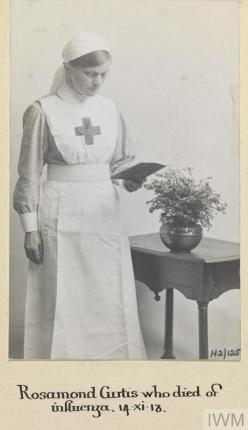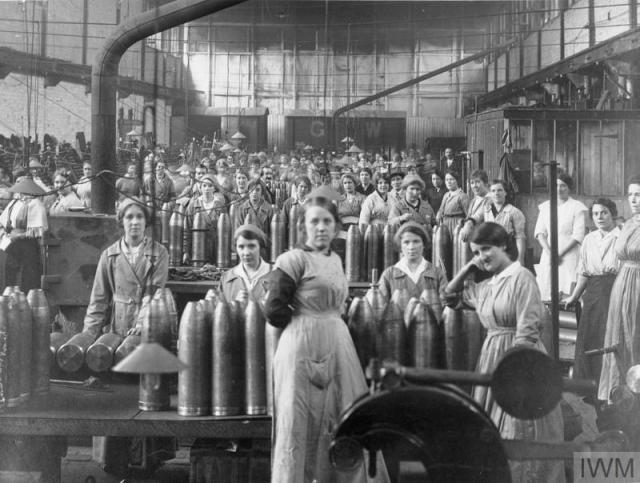Part 3

Lately in the news there have been stories about hospital ships being brought into action to help ease the burden on regular hospitals; about distilleries making hand sanitizer especially for police and healthcare workers; and about automotive companies producing ventilators instead of car parts. There’s even been speculation that a certain high-end parka manufacturer might begin churning out hospital gowns.
Each time I hear these stories, as well as today’s announcement that the Canadian government will help businesses “re-tool” to produce the supplies we need, I am reminded of my WW1 research, both for The Cowkeeper’s Wish with Tracy, and for my new book, still in the early stages, about patients and staff at a military hospital here in Toronto in the First World War.
In those days, all sorts of factories had transformed to produce munitions, but there were countless other changes too. Fancy shoemakers made army boots, milliners made military caps, and tailors made uniforms instead of ordinary suits and overcoats. Passenger ships became troop carriers or floating hospitals. Car manufacturers made military vehicles, and rubber tire producers made gas masks and balloons for reconnaissance. Even cardboard box manufacturers were affected by war: boxes of all sizes were now needed for care parcels for soldiers and sailors, for the boots and shoes and hats that made up their uniforms, for the medals that got pinned to them and for the ammunition they used. Cardboard discs hung in windows, proudly announcing that the man who lived there was off fighting for king and country.

Though the Spanish flu pandemic that surged in this period differed from the current outbreak, I feel somewhat comforted to dip back in time and explore how an earlier generation coped with worry and fear, and what sorts of decisions were made to try to slow the spread. Their pandemic rushed in at the end of a horrific war, and ours comes in the midst of environmental despair. Many people seem to be feeling a weird clash of emotions. On one hand, we’re only just recognizing an obvious but beautiful fact as the virus drifts across borders: we really are all in the same boat. Italy seems close when you can sit at your computer in Canada and hear people singing from their balconies, in isolation together. At the same time we’re dismayed by what we’ve collectively done to the planet that holds us. A sense of despair was also there a century ago, as the war was ending: people likened influenza to a deadly wind blowing about the earth as a kind of punishment.
According to Howard Phillips, the author of Black October, “many people were convinced that [the flu pandemic] must somehow have been connected with the war. Thus, in Entente countries, tags coined included ‘war plague,’ ‘Flanders grippe,’ ‘Hun flu,’ ‘Turco-Germanic bacterial criminal enterprise’ and ‘German plague,’ as many believed that the war-epidemic link lay in the unburied corpses on the battlefields or the dastardly use of poison gas. ‘So many were killed in the great war of the white people’, explained indigenous healers in faraway Southern Rhodesia, ‘that the blood of the dead caused this great sickness,’ while in the memory of one elderly flu survivor sixty years later, the war ‘poisoned the air … all the bombs and things … travelled with the wind [around the world].’

There were three waves of the pandemic then, just as there are expected to be subsequent waves of Covid 19. In January 1920, two years after the original outbreak, the death of a young Toronto boy prompted the Star headline “Is flu back again?” Over the course of the month, both the Star and the Globe reported on large outbreaks south of the border with such increasing alarm that it soon seemed inevitable the epidemic would return, swirling over the city like frenzied snowflakes, and falling wherever it chose. In Chicago, California-bound trains were “crowded to the limit” with people fleeing to escape flu. And in Detroit, the coroner announced the county morgue was “filled to its capacity with bodies. … If bodies continue coming in as they have in the last two days extra arrangements for their care will have to be made.” Ads appeared in Toronto papers for cure-alls like Hamlin’s Wizard Oil: snuff it up the nose at the first sign of a cough or sore throat and you could stop the symptoms from turning into “dangerous influenza.” By the end of January, there were “more than 500 cases of flu at the border,” as one headline put it, characterizing the illness as a band of murderers poised to invade.
In all likelihood we are in for a long and difficult ride that will impact all of our lives in a variety of ways. Hopefully we manage to lean on each other, without touching, of course. A friend of mine — the writer Phil Dwyer — recently posted some wise words.
“Trying times test us. In our responses, we show who we really are.”
♦

Thank you for another fascinating insight into the flu epidemic of 1918. I really do agree with you that there are many similarities with today’s situation.
LikeLiked by 2 people
Thanks for following along! I’m hoping to post some ads soon too.
LikeLiked by 1 person
My father was born in Southhampton, England in April, 1918. My grandmother remembered the “tramp, tramp, tramp” of soldiers boots as men returned from the war. I imagine she was terrified for her three children. Her husband worked on naval hospital ships in the last years of the war. I often think of her courage, and how she must have agonized over how to protect her children. She did protect them, and went on to have three more children, the last one born in Canada, where our extended family have lived, since.
LikeLiked by 2 people
Mary, thanks so much for sharing. What a time it must have been to live through.
LikeLiked by 1 person
Another wonderful story of hope in stressful times and how working together to defeat an invisible enemy can save us.
LikeLiked by 1 person